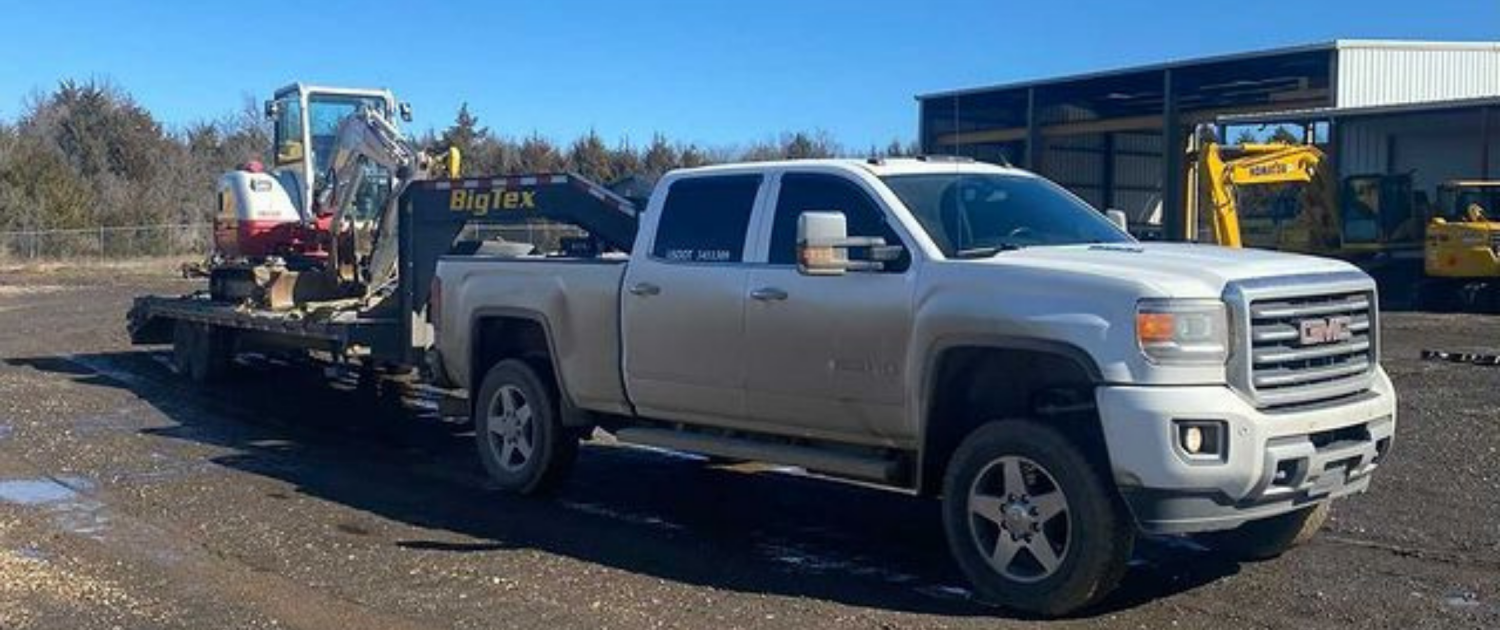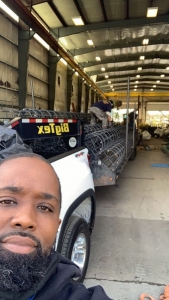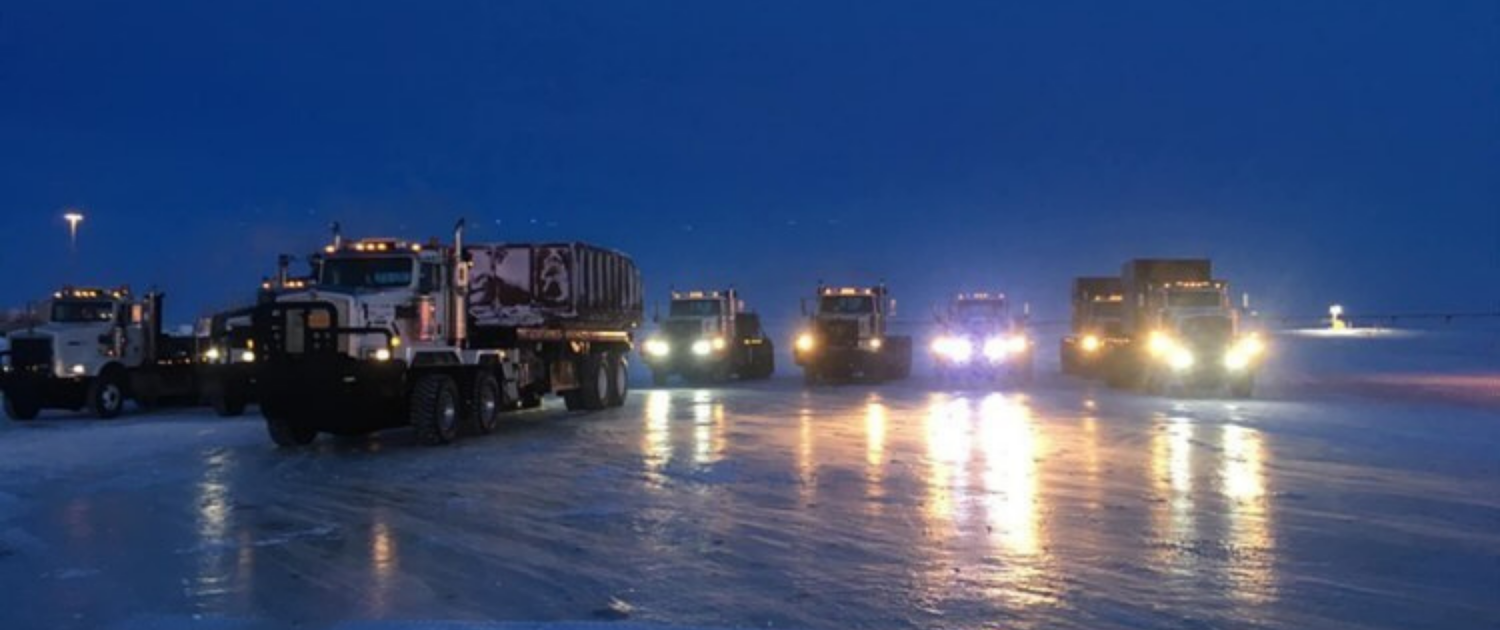
There is no one size fits all solution when it comes to trucking insurance for owner operators. You’ll have different insurance options available based on your haul type, range, level of experience, and driving record. Also, insurance requirements vary by state, so be sure to review your state’s regulations for your specific haul type and needs. We spoke with several trucking insurance experts, and they shared their top tips for choosing insurance as an owner operator.
What Types of Insurance Do Owner Operators Need?
The exact trucking insurance that you will need as an owner operator will vary. The best thing to do is talk to an insurance retailer that specializes in trucking insurance. They will be able to give you details on your specific situation. That said, here are a few basic insurance types to know:
Liability Insurance
Primary liability insurance covers damage to the tractor or trailer, and most owner operators need a minimum of $750,000 in coverage. That number will go up if you’re hauling hazmat or other riskier loads. Adding physical damage coverage to liability coverage can protect against potholes, weather conditions, and similar damage.
Cargo Coverage
Cargo coverage protects the goods that you haul. In the event of an accident, you need to know that the load you’re carrying is covered. Cargo coverage is specific to owner operators who are running under their own authority.
Non-Trucking-Liability (NTL) & Bobtail Coverage
If you are an owner operator who is running under a company’s authority, you will need NTL and Bobtail coverage. NTL covers drivers when they use their truck for non-businesses purposes such as a stop at the grocery store or an outing with friends. Bobtail policies also cover drivers who are returning from a deadhead load while still under dispatch.

David Zahm, Director of New Business at Robley Insurance
If you are partnering with a specific company, David Zahm, Director of New Business at Robley Insurance, encourages owner operators to do their research:
“I would encourage an owner operator to vet a company they’re going to work with. …Ask the trucking company directly, ‘I’d like to see a copy of your CAB report.’”
That information is powerful for drivers. You have to protect your own safety record, and a company with a poor CAB report is a huge red flag.
Passenger Accident Coverage
Passenger accident coverage provides insurance protection for guest passengers in your vehicle. While your passengers may not be part of the nuts and bolts of operating your truck, people are one of the most valuable assets in life. Passenger Accident Coverage helps give you peace of mind when you have someone else in the truck with you.
What Factors Affect Insurance Prices?
Trucking insurance for owner operators varies greatly. The level of insurance coverage that you need will affect pricing, but there are several other factors as well.

Joy LaFrance, Chief Underwriting Officer for One80 Intermediaries
CDL experience plays a big role in being approved for trucking insurance and pricing. According to One80 Intermediaries’ Chief Underwriting Officer, Joy LaFrance, underwriters want to see a minimum of 3 years of CDL experience and a CDL license in the state that you operate. Drivers with less than 3 years of experience may have a hard time finding insurance from a retailer that specializes in transportation. Underwriters and insurance retailers need evidence of a clean driving record and good business management.
One80 Intermediaries’ Chief Underwriting Officer, Joy LaFrance, noted:
“Preferred programs don’t typically take anyone that’s new in business less than 3 years unless they have 5 years prior experience. So the pricing for the first 2 to 3 years could be astronomical until they have proof that their loss history is good, that they are maintaining driver files, and that they are maintaining their vehicle.”

Jeff Ice, Transportation Practice Leader for Risk Strategies
Jeff Ice, the retired Transportation Practice Leader for Risk Strategies, confirmed:
“The only thing that really gives an underwriter some comfort as to what they’re going to insure is experience. So, if there’s no experience, yes there are places you can get insurance, but you’re going to pay the piper.”
An owner operator’s driving record is another factor. A good safety record is critical. Insurance carriers will look at inspection records, hours of service violations, driver fitness tests, logbook violations, and truck maintenance records among other things. They may also look for proper signage and safety features on your vehicle like fog lamps or deer guards.
A final determining factor on insurance price is down payment. If you are able to pay the insurance premium in full, insurance carriers may discount the total cost. The full lump sum is a big upfront cost, but it’s usually cheaper overall.
What Will Your Carrier Provide?
If you are an owner operator partnering with a single carrier or are a lease purchase driver, that carrier may offer insurance. If they do, read the fine print closely to decide whether it is the best option for you.
Ask questions to understand what is and is not covered. The insurance may not cover you while you are not operating under that company’s authority. That includes the time you may be working with other companies or traveling home when you are off duty. In addition, make sure that the carrier offers coverage levels that meet your specific insurance needs. Insufficient coverage will impact your eligibility to haul certain types of freight and can affect your bottom line. When asked about carrier insurance, Chief Underwriting Officer Joy LaFrance shared this:
“When they’re operating under the authority of someone else, what happens is, if [owner operators] leave and decide ‘I’m going to go on my own now,’ they have no history. So they basically are starting over. Unless I can get the data from that motor carrier, with all the claims, by driver, there’s no way to actually assess [owner operator] history.”
LaFrance added that when drivers use a carrier’s equipment and, “are only asked to get a non-trucking liability or bobtail liability, that does not count as primary insurance. We can’t use your non-trucking or bobtail liability for proof that you had no incidents.”
To decide if insurance through a carrier is right for you, think about your future goals. Will you keep expanding your business? Will you eventually run under your own authority and need a good insurance record? If so, you may do better with an insurance plan that is independent of any carriers so you can prove your record.
Where Can You Find Providers?
The best insurance retailers for owner operators specialize in transportation. A generalist won’t necessarily understand all the nuances that you need for the job. Shop around for both price and good coverage. If you are a new owner operator, you may have to rely on generalized national insurance carriers. When possible though, look for specific trucking insurance retailers.
Risk Strategies’ Jeff Ice offered this suggestion:
“As an owner operator just getting into the business, my first phone call would probably be to [OOIDA]. They would be able to turn you on to how to get your authority, do you need your own authority…[They] will be able to give you a lot of direction.”
One of the best ways to find a top trucking insurance policy is to ask owner operators! Find out where they get insurance and what they like or don’t like. There’s nothing better than a firsthand account, and other drivers aren’t trying to sell you on anything. An experienced owner operator is one of the best places to get suggestions.
Robley Insurance’s David Zahm left us with this advice for sustainable growth:
“You’ve got to start one [truck] at a time, and build slowly. … [If you try to grow too quickly,] you’ll end up with a distressed insurance company, and their rates are astronomical, which shrink your margins down…If somebody wants to run a trucking company the right way, then there’s a way to do it, and they have a chance to be very successful.”
Becoming an owner operator is an exciting step, and trucking insurance is a key part of that transition. Successful owner operators build slowly toward long-term goals and focus on sustainable growth. That’s an investment in yourself worth making.
Find an Owner Operator Job
Drive My Way matches you with a CDL job based on your personal preferences and qualifications.





 Why are the most important things in life so hard to put a number on? There are no numbers to talk about the value of your family or pride in a job well done. Company culture is like that. Company culture isn’t part of total compensation, but the best truck driving jobs all have a good company culture. Drivers are respected and value for the critical work they do. That shows up in everything from pay to home time to how
Why are the most important things in life so hard to put a number on? There are no numbers to talk about the value of your family or pride in a job well done. Company culture is like that. Company culture isn’t part of total compensation, but the best truck driving jobs all have a good company culture. Drivers are respected and value for the critical work they do. That shows up in everything from pay to home time to how  Truck Stops. Love them, hate them. Everyone has their favorites. This is your time to set the record straight. We chose seven can’t-miss truck stops around the US. Help us declare the best truck stops to visit by casting your vote. There’s
Truck Stops. Love them, hate them. Everyone has their favorites. This is your time to set the record straight. We chose seven can’t-miss truck stops around the US. Help us declare the best truck stops to visit by casting your vote. There’s 









 The second classification of commercial drivers is in
The second classification of commercial drivers is in  The final big decision to make is what kind of driver you want to be. As you can probably guess from the name, company drivers work exclusively for one company. Company drivers can work solo or in a
The final big decision to make is what kind of driver you want to be. As you can probably guess from the name, company drivers work exclusively for one company. Company drivers can work solo or in a  After you have your CDL, you are nearly ready to hit the road with your first job! As part of your CDL training, you will have completed your
After you have your CDL, you are nearly ready to hit the road with your first job! As part of your CDL training, you will have completed your The past few years have been hard for many in the trucking industry, and several companies have closed with virtually no warning. Celadon Group, New England Motor Freight, and Falcon Transport made big headlines (along with several others), but countless smaller companies have also shut their doors without warning. There are countless reasons for the shutdown, but as a driver, if your trucking company closes suddenly, it’s a tough pill to swallow. Here’s what you need to know to navigate your next steps.
The past few years have been hard for many in the trucking industry, and several companies have closed with virtually no warning. Celadon Group, New England Motor Freight, and Falcon Transport made big headlines (along with several others), but countless smaller companies have also shut their doors without warning. There are countless reasons for the shutdown, but as a driver, if your trucking company closes suddenly, it’s a tough pill to swallow. Here’s what you need to know to navigate your next steps. The
The  First and most importantly, stay level-headed. This is a stressful situation, and you probably have a lot of questions. As soon as you realize what has happened, find a
First and most importantly, stay level-headed. This is a stressful situation, and you probably have a lot of questions. As soon as you realize what has happened, find a  Dump truck jobs are great positions for drivers who want to stay close to home and are happy to be out rain or shine. Dump truck work includes a big range in type of load. Some drivers
Dump truck jobs are great positions for drivers who want to stay close to home and are happy to be out rain or shine. Dump truck work includes a big range in type of load. Some drivers 











